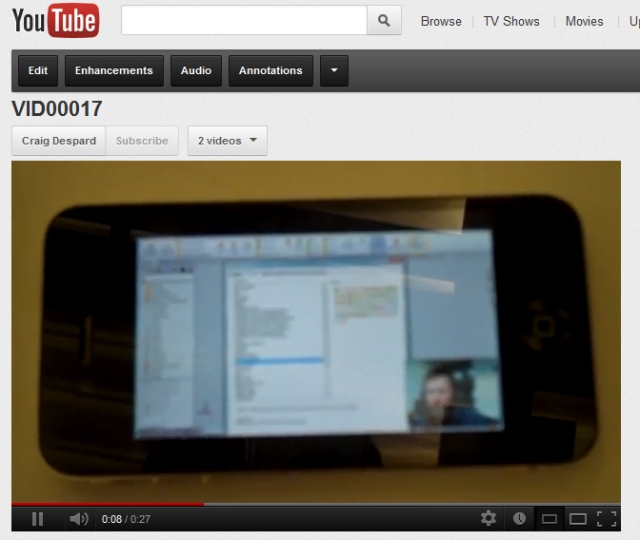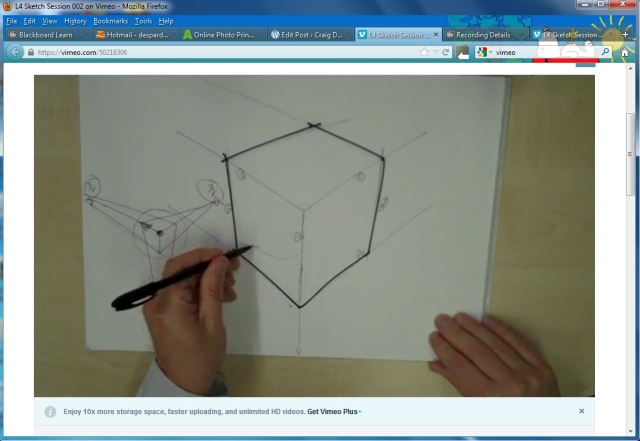As I continue to think and read around the subject of Lecture Capture and Augmentation I continue to explore current pro’s and con’s and the future benefits. Some research suggests that when students are confident that their lecture will be digitally captured they can relax in the actual physical lecture and absorb it without minor disruptions such as note-taking as they are confident that by reviewing the digital copy after they can then take notes at a slower pace safe in the knowledge that they can pause and rewind the digitally captured lecture at any time according to Dickson et al (cited in Purcel and Hong-Ning, 2011:5) and Owston et al (2011). However this positivity toward lecture capture conflicts with the opinion of Smithers (2011), in his blog where he suggests that digital duplicates of a lecture don’t enhance the students educational experience and money should not be wasted by institutions. In addition, as traditional lectures are usually of long length as to fit in with timetabling constraints of the buildings they are conducted in and these traditional lecture habits should not permeate into digital lecture capture with there excessive length. He also suggest that shorter flexible recordings would provide richer content including screen captures as these are less passive and more engaging and would fit in more with the students lifestyle patterns. I feel it could also be added that a traditional lecture is expected to be of a long length by both students and staff due to our preconceived and mental expectation of what a traditional lecture is. I think the word flexible is important here as this suggests an opportunity to make the material suit an individuals educational needs and not a one size fits all model which is currently being pursued.
The above suggests that students are impatient with long lectures and wish to efficiently extract the threshold concepts of the lecture that they feel they may have missed, this would suggest a benefit of shorter movies, capturing the threshold concepts with a hope of them using on home and mobile devices on the move. Threshold concepts was a term first used by Meyer and Land (2003) and is best described as ‘something distinct within what university teachers would typically describe as ‘core concepts’’.
I feel at this stage it is in the projects interest to cover both bases by supplying a full recording of the lecture (which only minimally adds to current workload) and also a shorter key concepts which adds 30 minutes preparation time. I also wish to pursue the idea of moving up the Bloom’s Taxonomy triangle by exploring flexibiltiy of digital content. A comment to my previous post from Rebecca Jackson suggested my recordings could be used as an Open Educational Resource (OER), I think this is something I should consider. I suppose my material to date has been ‘open’ as lots has been posted to Vimeo for all to see but only a few have been viewed by outside people. As I increase in personal confidence, my digital content and my digital networking expands I feel I will need to consider that my material maybe increasing recognised as an open resourse. Barba (2012) suggests that as digital material becomes ‘open’ it enriches the experience of the on-campus students due to increased participation in the on-line forum. Barba (2012) also advocates the use of the ‘flipped classroom’ when using digital screencast’s as part of the learning experience.
Barba, L. A. (2012) Open Education, Flipped Instruction & Social Learning, NEA, FOEE Symposium Application 2012, Boston University. [On-line at: http://figshare.com/articles/Application_for_the_NAE_Frontiers_of_Engineering_Education_Symposium_2012/96413]
Meyer, J.H.F. & Land, R. (2003) Threshold concepts and troublesome knowledge: linkages to ways of thinking and practising, ETL Project Universities of Edinburgh, Coventry, and Durham 2003. [See also for an on-line version: Enhancing Teaching-Learning Environments in Undergraduate Courses, ETL Project, Occasional Report 4, May 2003 last accessed 25 October 2012]
Owston, R., Lupshenyuk, D., & Widemann, H. (2011) Lecture Capture in Large Undergraduate Classes: What is the Impact on the Teaching and Learning Environment? Institute for Research on Learning Technologies, York University, Toronto, Canada.
Pursel, B. & Hong-Ning, F. (2011) Lecture Capture: Current Research and Future Directions, The Schreyer Institute for Teaching Excellence. [See also for an on-line version: http://www.psu.edu/dept/site/pursel_lecture_capture_2012v1.pdf last accessed 25 October 2012]
Smithers, M. (2011) ‘Is lecture capture the worst educational technology. Learning and Educational Technology in Higher Education [Blog] http://www.masmithers.com/2011/03/11/is-lecture-capture-the-worst-educational-technology/ [accessed 27 October 2012]






